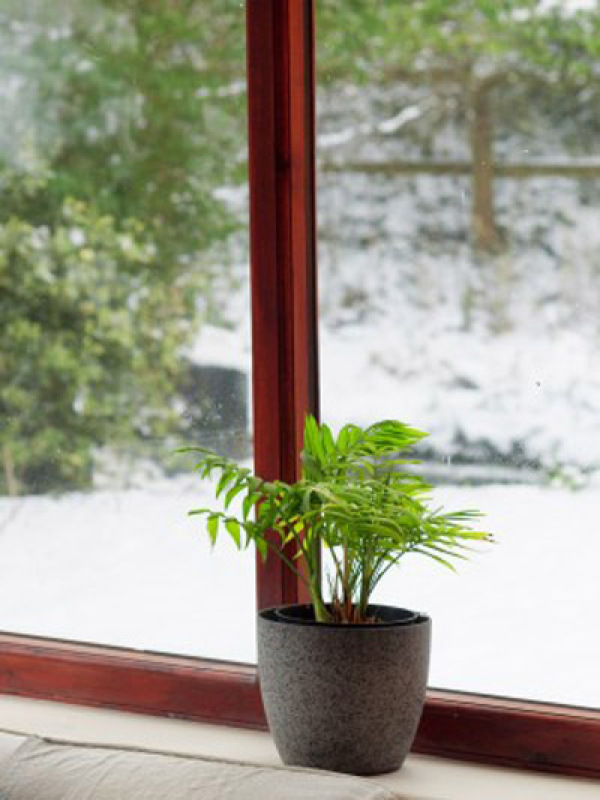The onset of winter weather outside can take a surprising toll on indoor plants. Dry air, dust accumulations, and dwindling daylight, can quickly add up to less than ideal conditions for your plants. Here are some easy tips for keeping your houseplants healthy throughout the winter season.

Once your home's windows are shut for the season, it's easy to put off dusting. Plants are equipped with tiny pores or openings (stomata) on the surface of their leaves. This is how they breathe (exchange gases). If these pores become clogged with dust, the plant quickly becomes dull and unattractive in appearance, growth becomes restricted (dust blocks out already limited seasonal light), and the plant starts to deteriorate. Regular dusting will also help prevent insect infestations.
Central heating during the winter can produce very dry air that contains as little as 10 to 20 percent humidity. Because houseplants prefer a humidity level of around 40 to 50 percent, intervening to increase the humidity around them is usually necessary. As a general rule, plants with thin, papery leaves require a higher level of humidity than plants with thick, leathery leaves.
Nearly all indoor plants need some type of resting (dormant) period during the year in order to put out healthy new growth in the spring. For example, flowering plants like orchids and cacti will flower poorly (or not at all) if they are not given a winter rest. Because of its cooler temperatures and shorter days, this dormant period usually takes place during winter. When your plants are at rest, growth either slows significantly or stops altogether. As a result, their feeding and watering schedule needs to be adjusted accordingly.
About The Author: Ellen Brown is an environmental writer and photographer and the owner of Sustainable Media, an environmental media company that specializes in helping businesses and organizations promote eco-friendly products and services.
Add your voice! Click below to comment. ThriftyFun is powered by your wisdom!
As soon as I read your article on how plants need their leaves cleaned, I went right into the kitchen and cleaned my bamboo plants leaves. It was looking rather puny. Now it is better. I now know that I can keep plants in the winter, it will bring me a lot of joy!
Add your voice! Click below to comment. ThriftyFun is powered by your wisdom!